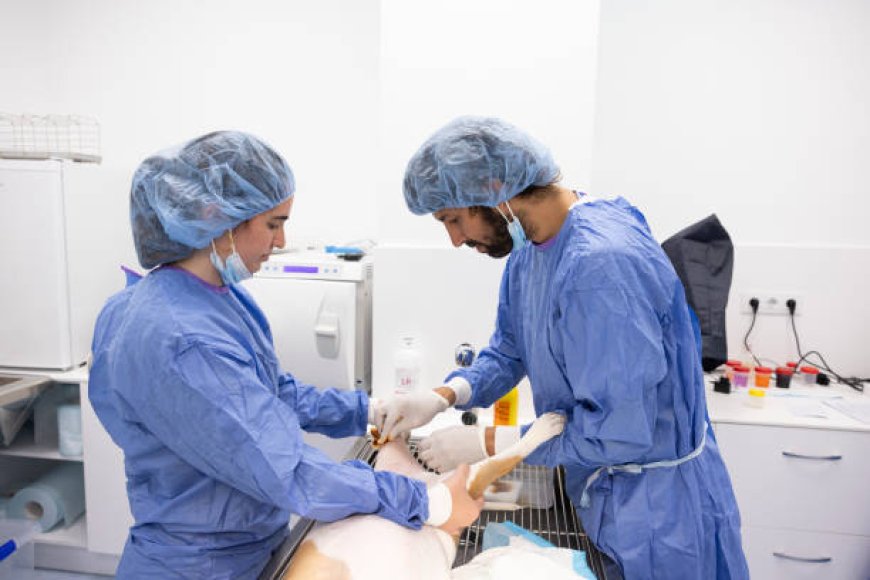Cadaver Hands-On Training Labs: Advancing Medical Precision Through Realistic Practice
In the world of healthcare and surgery, precision is paramount. While textbooks and simulations offer foundational knowledge

In the world of healthcare and surgery, precision is paramount. While textbooks and simulations offer foundational knowledge, cadaver hands-on training labs provide the gold standard in practical medical education. These labs allow physicians, surgeons, residents, and medical students to work with real human tissue, enhancing their anatomical understanding and technical skills in a safe and controlled environment.
The Power of Realistic Learning
Unlike synthetic models or digital simulations, cadaveric training replicates the complexity of human anatomy with unmatched realism. Participants learn how tissues feel, how anatomical structures vary between individuals, and how to navigate real-life surgical challenges with accuracy.
In specialties like orthopedics, neurosurgery, ENT, emergency medicine, and plastic surgery, hands-on experience with cadavers is not just beneficial—it’s essential. Practicing on actual human tissue gives medical professionals the confidence and competence they need to perform successfully on live patients.
Key Benefits of Cadaver Training Labs
-
Anatomical Accuracy: Cadaver labs offer an unfiltered view of the human body. Learners gain an appreciation for anatomical variation, a crucial element in clinical decision-making.
-
Skill Mastery: Whether it’s suturing, making incisions, using endoscopic tools, or performing complex surgical procedures, cadaver labs allow repeated practice without the pressure of harming a living patient.
-
Team-Based Learning: Surgeons, nurses, and technicians can train together in real-world scenarios, improving communication and efficiency in the operating room.
-
Confidence Building: Repeated exposure to cadaver training improves muscle memory, decision-making, and confidence—critical traits for anyone entering high-stakes medical environments.
-
Hands-On with Technology: Many labs incorporate advanced tools like fluoroscopy, ultrasound, and robotic surgical systems, helping trainees master modern equipment in a low-risk setting.
Applications Across Medical Fields
Cadaver hands-on training labs are widely used in:
-
Medical education for anatomy courses
-
Surgical residency programs for procedural practice
-
Continued medical education (CME) for licensed professionals
-
Emergency services training for EMTs and paramedics
-
Aesthetic medicine and dental surgery for precision-based interventions
Each specialty benefits from real-time tactile feedback that no simulation can match.
Ethical and Professional Standards
Cadaver labs operate under strict ethical guidelines. Donors participate in whole-body donation programs, contributing to the advancement of science and education. Respect and dignity are central to the learning environment, and participants are reminded of the human gift that enables their growth.
Looking Ahead: Innovation Meets Tradition
As technology continues to evolve, so do cadaver labs. Augmented reality overlays, 3D imaging, and hybrid learning platforms are being incorporated alongside traditional dissection methods to create richer, more effective learning experiences.
Yet despite these advancements, the value of real human anatomy remains irreplaceable. Cadaver labs continue to be the cornerstone of hands-on medical training, offering a bridge between theoretical education and clinical application.
Conclusion
Cadaver hands-on training labs are shaping the future of medicine by grounding it in realism, respect, and results. They empower practitioners to refine their craft, improve patient outcomes, and meet the demands of an ever-evolving healthcare landscape. For medical institutions and professionals committed to excellence, cadaver-based training is not just an option—it’s a necessity.
What's Your Reaction?
 Like
0
Like
0
 Dislike
0
Dislike
0
 Love
0
Love
0
 Funny
0
Funny
0
 Angry
0
Angry
0
 Sad
0
Sad
0
 Wow
0
Wow
0






























:max_bytes(150000):strip_icc()/GettyImages-476805177-569530f65f9b58eba499f940.jpg)





